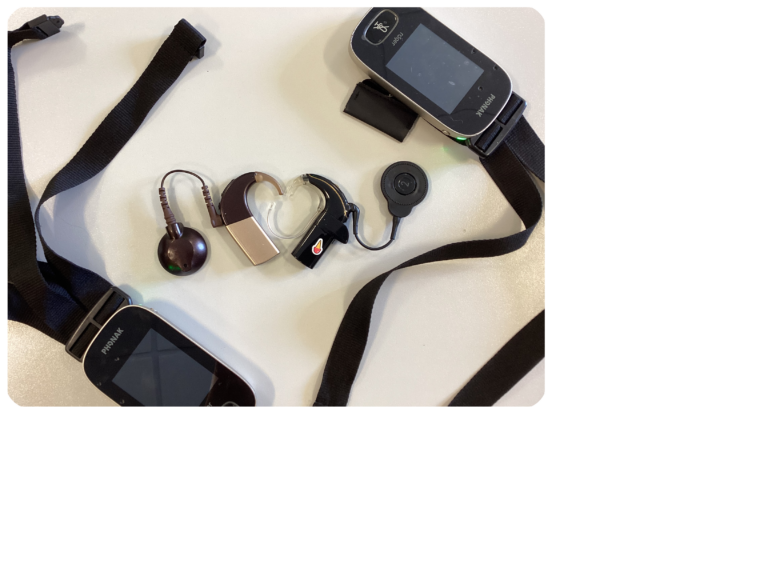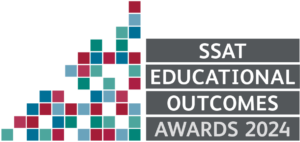10 Myths About Deaf People – What You Should Know

Myth 1: Cochlear Implants, Hearing Aids, or BAHAs Let Deaf Students Hear Everything
Truth: Hearing technology can help, but it doesn’t completely restore a deaf person’s hearing.
Cochlear implants and hearing aids are amazing tools, but they don’t work the same way as natural hearing. For some students, they help pick up sounds, but they might not hear every word or notice background noise like a hearing person would.
This can mean that even in quiet settings, understanding speech or conversations takes extra focus. Imagine trying to piece together a puzzle while it’s being shaken – that’s sometimes how it feels for a deaf student trying to follow a fast-paced discussion.
Myth 2: Deaf Students Can’t Be in Mainstream Schools
Truth: Deaf students can succeed in mainstream schools with the right support.
Deafness doesn’t stop students from learning alongside their hearing peers, but without the right help, things can get tricky. For instance, teachers might need to adapt how they speak – facing the class instead of writing on the board while talking, so students who lip-read can follow along.
At the Deaf Hub, we train staff to be “deaf aware.” This means they learn how to create a deaf-friendly classroom, from using clear speech to repeating questions asked by other students so everyone can follow.
We also help deaf hub students build confidence. Extra support sessions give them time to go over tricky topics or work on communication skills. By combining mainstream lessons with tailored help, students can stay part of the wider school community while still getting what they need to succeed.

Myth 3: Being Deaf Means Being Unable to Hear at All
Truth: Deafness exists on a spectrum.
Not all deaf people experience complete hearing loss. Some may hear certain sounds or frequencies, while others might only notice vibrations or very loud noises.
At St John Fisher’s Deaf Hub, we work with students across this spectrum. For example, some students benefit from hearing aids to amplify sounds, while others might rely on visual cues or sign language.
Myth 4: All Deaf People Use Sign Language
Truth: Not all deaf people communicate the same way.
When you think of deaf people, you might imagine someone using British Sign Language (BSL). While many do, not everyone chooses sign language. Some might lip-read, use spoken language, or a mix of both.
Speaking of lip-reading, here’s another myth.
Myth 5: All Deaf People Can Lip Read
Lip-reading isn’t as simple as it looks in the movies. It’s a skill, but it’s not perfect – even the best lip-readers only catch part of what’s being said, and things like accents or mumbling can make it even harder.
It’s important to remember that no communication style is “better” than another. It’s all about what works best for the individual.
That’s why, at SJF, we also focus on a mix of BSL, speech, and language skills. We teach students how to advocate for themselves, whether it’s asking someone to repeat something or reword it, because everybody deserves to be understood.
Myth 6: There’s Only One Signed Language
Truth: Sign languages are as diverse as spoken ones.
Just like English, French, and Spanish are different languages, so are British Sign Language (BSL), American Sign Language (ASL), and many others. In fact, BSL and ASL aren’t even similar, unlike British and American English!
Each signed language has its own grammar and vocabulary, shaped by the culture of the people who use it.
Did you know, both hearing and deaf people who use sign language regularly are given a ‘sign name’? This name has to be given to you from someone within the Deaf community and could describe your personality, hobbies, or how you look.
Myth 7: Deaf Students Can’t Make Friends with Hearing Peers
Truth: Deaf students can have great friendships with hearing classmates.
Friendship is about connection, not how well you hear.
At St John Fisher, we’ve seen firsthand how friendships blossom between deaf and hearing students. Building those connections often starts with small, thoughtful steps – like learning a few signs or understanding how to communicate clearly.
Friendship isn’t about perfect communication – it’s about connection. With the right support, that connection happens naturally.
Myth 8: Deaf People Can’t Drive
Truth: Deaf people can drive safely and legally.
Some people assume hearing is essential for driving, but that’s not true. Driving relies more on sight than sound, and deaf drivers are often more alert visually because they aren’t distracted by background noise.
Deaf people can use mirrors and pay attention to flashing signals, just like hearing drivers.
Myth 9: Deaf People Can’t Enjoy Music
Truth: Music isn’t just about hearing – it’s about feeling and experiencing.
Deaf people enjoy music in all sorts of ways. Remember, for many deaf people, there are still sounds they can hear and enjoy – deafness doesn’t always mean that you can’t hear anything at all.
For others, they might feel the vibrations of the beat, watch a performance, or even sign along to the lyrics. Many profoundly deaf musicians still create their own music across a range of vibrant genres, proving that sound is only part of the experience. For example, DJ Inigo is a deaf DJ who has created deaf-friendly music events since the 90s.
At the Deaf Hub, we celebrate all forms of creativity. Whether it’s exploring music in lessons or joining in school performances, we encourage students to engage in ways that work for them.
Myth 10: Deaf Students Can’t Achieve Big Goals
Truth: Deaf students can achieve just as much as anyone else.
With the right tools and teaching, deaf students can do incredible things.
But achievement isn’t just about academics. It’s about feeling confident, building independence, and knowing you have the support to succeed. That’s why the Deaf Hub also helps students prepare for life after school, from career advice to skills for independent living.
It’s about giving every student the chance to dream big – and reach those dreams.
If you are interested in receiving a tour of St John Fisher school and the Deaf Hub, please get in touch via either email or phone call. We’d be happy to show you around and introduce you to the resident Teacher of the Deaf Mrs Lester, Inclusion Manager Ms Sennett, and SJF students
Lucy.Lester@stjohnfisherschool.org.uk
01733 343646
© 2022 Created by St John Fisher Catholic High School






